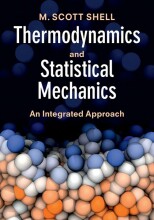Summary: Differential Equations & Linear Algebra | 9781292025131 | Stephen Goode, et al
- This + 400k other summaries
- A unique study and practice tool
- Never study anything twice again
- Get the grades you hope for
- 100% sure, 100% understanding
Read the summary and the most important questions on Differential Equations & Linear Algebra | 9781292025131 | Stephen Goode, Scott Annin
-
1 First-Order Differential Equations
-
1.1 How Differential Equations Arrise
This is a preview. There are 4 more flashcards available for chapter 1.1
Show more cards here -
What makes a differential equation?
Because this mathematical statement involves derivatives of the unknown function y(t). -
How many solutions does the function have?
This differential equation has an infinite number of solutions parameterized by the constants c1 and c2. -
What are Orthogonal trajectories?
Orthogonal trajectories are when all curves of family F intersect the curves of family G at right angles. -
1.2 Basic Ideas and Terminology
This is a preview. There are 2 more flashcards available for chapter 1.2
Show more cards here -
What is the difference between an ordinary and a partial differential equation?
In an ordinary differential equation the unknown function y(x) is only dependent on x.
In a partial differential equation the unknown function f(y,x) is dependent on both y and x. -
What is the order of a differential equation?
The order of a differential equation is the order of the highest derivative occurring in a differential equation. -
When is a solution called a general solution?
When a solution to an nth-order differential equation on an interval I satisfies the conditions:
1. The solution contains n constants.
2. All solutions to the differential equation can be obtained by assigning appropriate values to these constants. -
When is a solution called particular?
When the solution does not contain any arbitrary constants. -
What is an initial-value problem?
An nth-order differential equation with n auxiliary conditions of the form:,
,
where y0, y1,..., yn-1 are constants. -
1.3 The Geometry of First-Order Differential Equations
This is a preview. There are 7 more flashcards available for chapter 1.3
Show more cards here -
What is a solution curve?
A graphical representation of one solution to a differential equation. -
What is meant with the existence of a solution?
Does the inital-value problem have any solutions?
- Higher grades + faster learning
- Never study anything twice
- 100% sure, 100% understanding































